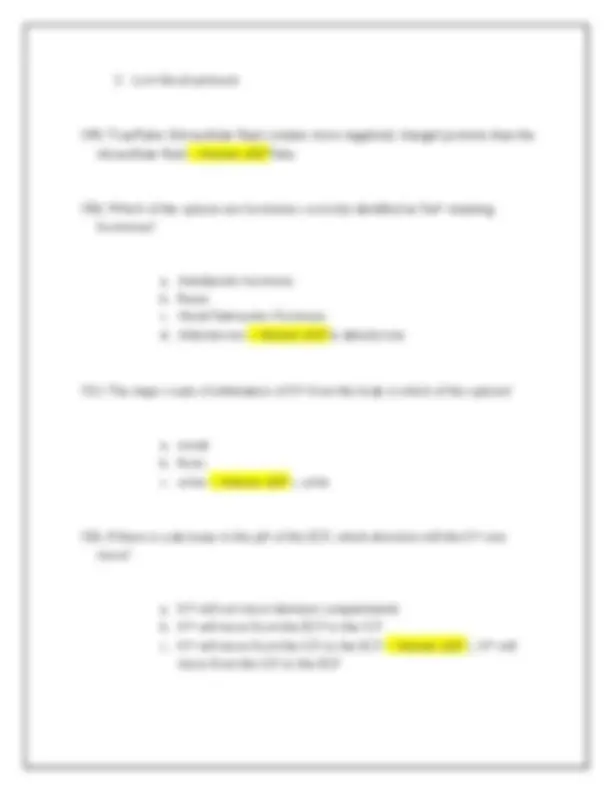




















Study with the several resources on Docsity

Earn points by helping other students or get them with a premium plan


Prepare for your exams
Study with the several resources on Docsity

Earn points to download
Earn points by helping other students or get them with a premium plan
Community
Ask the community for help and clear up your study doubts
Discover the best universities in your country according to Docsity users
Free resources
Download our free guides on studying techniques, anxiety management strategies, and thesis advice from Docsity tutors
A series of multiple-choice questions and answers related to the urinary system, specifically focusing on the functions of the kidneys, nephrons, and the process of urine formation. It covers topics such as tubular reabsorption, glomerular filtration, acid-base balance, and the roles of various hormones like adh and aldosterone. The questions are designed to test understanding of the physiological processes involved in maintaining fluid and electrolyte balance in the body. This material is suitable for students studying anatomy, physiology, or related health sciences.
Typology: Exams
1 / 26

This page cannot be seen from the preview
Don't miss anything!



















b. Juxtacortical c. Juxtamedullary -- Answer ✔✔ c. Juxtamedullary